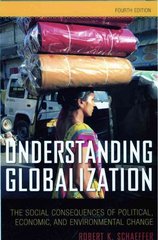Question 18: What made OPEC decide to cut the supply of oil? What was the desired outcome of the decision? What was the change in the supply and demand curves of oil and the subsequent market equilibria? Analyse the changes both before and after the decision to reduce supply. Answer 18: OPEC is one of the world's largest oil supplying organizations which means that they operate in an industry type which is known as an oligopoly these people hold majority of oil reserves which are then sold to the entire world economy. Being the only people who have this natural resource which is limited in supply means an absolute control on pricing and supply to a major extent. When the pandemic hit, there was complete shutdown in the countries. The movement was restricted, businesses were closed and the economic activity was at a halt. As work from home culture erupted, there was no movement of people to even go to offices. With all this disruption, the demand of oil also fell because people were neither commuting to work, nor travelling and only the essential items were being produced for survival. And with low demand sellers are forced to sell oil at a lower rate meaning less profits or even losses. And thus, the oil prices collapsed to a historic low. It was so low that may benchmark fell into negatives, implying that people would pay to get rid of the oil. The countries didn't have enough oil storage space. In order to avoid price from falling further they need to reduce the supply. When the OPEC then met, they decided to reduce the supply of oil so that they could retain the levels of profits which they previously had or even reduce losses to a certain extent. As a result of their decision, they want to restabilize the supply to current demand so that the prices don't fall beyond and they can curb the oil prices to maximize their levels of profits. Before the pandemic the Demand and Supply curve was as shown below. And as the Pandemic hit, because of fall in demand, the demand curve moved towards left, while the supply was not changed because the oil was produced in full capacity till the decision was taken by OPEC. The Demand and Supply curve looks as below. And we can see with the leftward move the New Demand Curve is drawn. The equilibrium moves towards left with fall in price and the quantity. Now, Ed becomes the new equilbrium point before the decision making The Supply Curve and New Demand Curve (Red) represents the situation before the OPEC decision. Now when the OPEC took decision, there was no change in the demand curve because the decision didn't led to any sudden rise or fall in demand. But as per the decision the supply was reduced by 9.7 million barrels per day. That means the supply curve move leftwards/upwards after the decision was taken. It can be represented as followsWe can see with Supply curve moving upwards with no change in demand from where it was before the decision was taken, the equilibrium point moves towards the left from E1 to E2, leading to increase in price and reduction in the quantity. Thus, we can conclude by saying that prior to the supply being reduced by the organization, the global prices for crude oil had been declining due to the slump in demand for the same. Once the organization met and decided the fact that it was in their best interest to even reduce the supply of the good which no other country was producing in same proportion meant that the prices went up and profits began returning to a certain extent







